Patchen California Christmas Tree Farms
Introduction
Text-to-speech Audio
Images
Patchen California Christmas Tree Farms (image from Yelp)
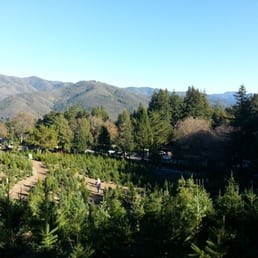
The site of Patchen (image from Patchen California Christmas Tree Farms)
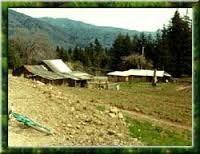
Mountain Charlie's Bear Fight (image from Historical Marker Database)
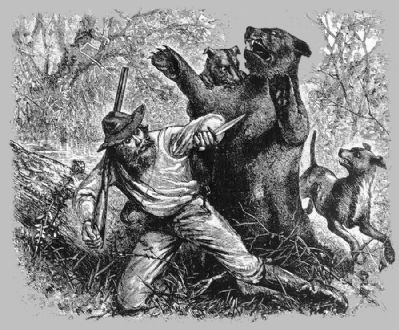
Mountain Charlie's Big Tree with marker (image from Historical Marker Database)
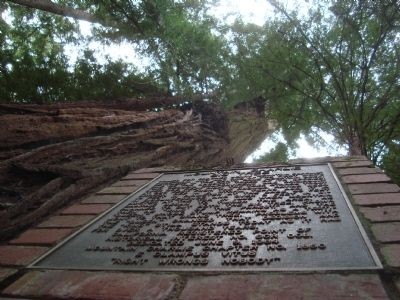
"Call of the Wild" station c. 1910 (image from Historical Marker Database)
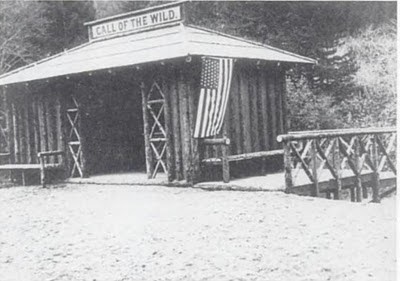
Backstory and Context
Text-to-speech Audio
Patchen, California - A Stagecoach Town
Though local American Indians had occupied the site of Patchen long before and Spanish explorers had written a description of the area in the mid-18th century, the first permanent European settler of Patchen was Irishman Charles Henry McKiernan, better known as "Mountain Charlie, or Charley, (c.1825 - 1892) (2; 8). During his lifetime, Mountain Charlie was a soldier, hunter, rancher, teamster, lumberman, road-builder, stage-line operator, and miner (1; 8). McKiernan had just finished his term as a quartermaster in the British army in New Zealand when gold was struck in California (1848) just two years after the United States took possession of the state. McKiernan signed onto the crew of a ship bound for San Francisco and worked in the mines for $20 a day (most jobs in Ireland at the time paid $20 per year). After a year's work, McKiernan lost his entire savings in an Indian attack while trying to reach northern California; undeterred, he saved his wages for another year and headed to the Santa Cruz Mountains with his friend Page in 1850, hoping to establish a homestead. Page departed for Santa Cruz, but McKiernan settled, alone, at Laguna del Sargento, a long-time Indian camping ground as evidenced by a number of mortars, pestles, and arrowheads. Here, near a spring, Mountain Charlie constructed the first frame house in the Santa Cruz Mountains, raised livestock, and hunted deer and grizzly bears for the Alviso and San Francisco markets (6; 8).
McKiernan's first neighbors arrived beginning in 1852: John Martin Schultheis and his wife established a homestead a mile away, followed by Lyman John Burrell and family, John Bean, and Charles C. Martin the following year (7; 8). On May 8, 1854, Mountain Charlie and his soon-to-be-neighbor John Taylor shot at a mother grizzly, who then bit down on McKiernan's skull as he hit her with the butt of his rifle, dragged him across the clearing, and defended her cubs from Taylor's dogs before departing. From his survival of this encounter, Mountain Charlie became a legend in his own lifetime, though he was permanently disfigured and required three surgeries (two without anesthetics) as a result (1; 2; 8). The frontal bone above his left eye to the top of his forehead was replaced by a silver plate made of two Mexican pesos by Dr. T.J. Ingersoll of San Jose, replaced twice due to corrosion and a brain abscess (3; 8). The grizzly fight perhaps overshadows Mountain Charlie's more practical legacy--building the first roads through the area in the 1850s and 1860s, including the Santa Cruz Turnpike Company's McKiernan Toll Road (now known as Mountain Charlie Road) and the California Stage Company mail route, with a horse change stop at what would become known as the town of Patchen--its post office named after a racehorse when established in 1872 (1; 2; 5; 8).
Towns including Wright's Station, Laurel, Lexington, and Alma, popped up with stagecoach access and tourist interest in Santa Cruz beaches and mountain hotels and resorts, including the Edgemont Hotel in Patchen, operated by Mr. and Mrs. L.N. Scott. Jack London's vacation home was at the D.C. Feely Ranch, owned by one of the first postmasters of Patchen (1; 2). With the stagecoach, too, came driver Charlie Parkhurst, also known as Silent Charlie or Cock-eyed Charlie. Born Charlotte Parkhurst in 1812, she assumed a male identity to obtain work in a Vermont livery stable, quickly becoming an expert driver known for "his" ability to be careful and showy simultaneously. Chosen out of fifty applicants, Parkhurst was hired by Ben Holiday to drive the stage in Council Bluffs, Iowa, where he worked for three years until pressured by Mormon society to marry. Instead, Parkhurst took a job with the Danforth Porter stage line in California around 1868. By this time, Parkhurst had lost an eye to a kick from a horse, and wore an eye patch along with the customary thick clothing of a driver, which helped maintain the male identity in spite of a clean-shaven face (2; 9). "Silent" Charlie was described as "profane to the extreme, cold and unfriendly in manner," and incessantly chewing tobacco. When the railroad opened from Los Gatos to Wright's Station, Parkhurst retired from the stage and took up raising stock along with fellow bachelor Frank Woodward, and hauling wood for neighbors. When Parkhurst died in December of 1879, it was finally revealed that she was a woman; Woodward was furious at the deception (9).
Mountain Charlie died on January 18, 1892, of a stomach ailment; his lifelong motto had been, "Right wrongs nobody" (1; 8). In the early 20th century, earthquakes took their toll on the railroad by way of landslides, bridge destruction, loss of buildings, and the damage to the rails themselves (1; 2). In 1940, the railway closed and Highway 17 was constructed, bypassing towns including Patchen, Holy City, Laurel, Clems, Wright's Station, Lexington, Alma, and Glenwood, eventually leading to their abandonment (1; 2). Three buildings remained at Patchen in the late 1940s; the old stage station was torn down for re-use of the timbers in another house, and the 1876 post office was destroyed by fire in 1957 and its remaining chimney toppled in the 1989 Loma Prieta Earthquake. Only a barn and a spring-fed reservoir remain of the once bustling stage town known as Patchen (2).
Sources
2. Patchen California Christmas Tree Farms. Official Website. Accessed October 21, 2016. http://patchencalifornia.com/about-us/history/.
3. Swackhamer, Barry. "Mountain Charlie Bear Fight." Historical Marker Database. March 13, 2012. Accessed October 21, 2016. http://www.hmdb.org/Marker.asp?Marker=53478.
4. Swackhamer, Barry. "Mountain Charlie Big Tree." Historical Marker Database. March 13, 2012. Accessed October 21, 2016. http://www.hmdb.org/Marker.asp?Marker=53479.
5. Swackhamer, Barry. "Mountain Charlie Road." Historical Marker Database. March 13, 2012. Accessed October 21, 2016. http://www.hmdb.org/Marker.asp?Marker=54128.
6. Swackhamer, Barry. "Mountain Charlie's Cabin." Historical Marker Database. March 13, 2012. Accessed October 21, 2016. http://www.hmdb.org/Marker.asp?Marker=53477.
7. Swackhamer, Barry. "Patchen." Historical Marker Database. March 13, 2012. Accessed October 21, 2016. http://www.hmdb.org/marker.asp?marker=53475.
8. Young, John V. "Mountain Charley." From Ghost Towns of the Santa Cruz Mountains, 1979. Santa Cruz Public Library. Accessed October 21, 2016. http://www.santacruzpl.org/history/articles/239/.
9. Young, John V. "Silent Charley - Charley Parkhurst." From Ghost Towns of the Santa Cruz Mountains, 1979. Santa Cruz Public Library. Accessed October 21, 2016. http://www.santacruzpl.org/history/articles/240/.
